Russian 7.62x54mmR Duplex Cartridge Patent

Tandem or duplex ammunition - where two bullets are stacked in a single cartridge - is not a new idea, but it has never gained widespread popularity. The concept is revisited over time because it’s intriguing due to its potential to enhance machine guns' fire density, dispersion significantly, and hit probability. However, despite its promise in theory, this approach often falls short of improving accuracy or lethality in practice.
Russian Ammunition @ TFB:
Russia currently manufactures duplex ammunition, specifically the 12.7-mm two-bullet cartridge designated as 1SL-9-A-4012 and the 12.7-mm two-bullet tracer cartridge known as 1SLT-9-A-4427. These cartridges are designed to improve efficiency in aviation applications, primarily for use in the Yak-B 12.7. It should be noted that they are not compatible with the DShK or NSV due to differing chamber specifications. In 2022, a new utility patent (RU 218009 U1) was filed for a duplex cartridge intended for 7.62x54mm machine guns, aiming to achieve a high density of fire.
New PKM ammo
The proposed design for the 7.62-mm double-bullet cartridge features a standard 7.62mm bullet with a recessed tail section, allowing a second hollow bullet to fit into this recess. This combination is engineered to enhance accuracy, making it more effective in destroying enemy personnel and equipment. Additionally, the improved ballistic performance of the 7.62mm double-bullet cartridge can significantly increase fire density in urban combat operations. By increasing the number and dispersion of bullets, this concept enhances the quality and efficiency of shooting.
Multi-bullet cartridges are noteworthy and offer several advantages, particularly in terms of fire density. The two bullets are designed to follow different trajectories and can separate after a certain distance. This characteristic is beneficial in a machine-gun role; for instance, a weapon squad might need to suppress a target more than 500 meters away from their position, thus overwhelming the target with superior fire. However, the effectiveness of this approach depends on adequate dispersion, allowing the two projectiles to separate at the appropriate distance. Although duplex ammunition typically lacks penetrating power, testing a mixture of 7.62 B-32 API and duplex ammunition would be intriguing.
“The claimed utility model is illustrated in Figure 1, which shows the design of a 7.62-mm double-bullet cartridge. The proposed device consists of a 7.62 mm bullet with a notch in the tail (1), a 7.62 mm tubular bullet (2), a propellant charge (3), an igniter primer (4), and a sleeve (5). Distinctive features are that it uses a 7.62 mm bullet with a notch in the tail, having a mass of 5.1 grams (78.7 gr.), and an initial exit velocity from the bore of 860 meters per second (2821 fps), which houses the head of a 7.62 mm tubular bullet weighing 4.7 grams (72.5 gr.), with a longitudinal hole with a diameter of 2 mm, having an initial departure speed of 800 meters per second (2624 fps). Used sleeve (5) is designed to accommodate and protect from external influences propellant powder charge, fastening the primer and two bullets, basing the cartridge in the weapon's chamber, and obturation of powder gases when fired. The propelling powder charge (3) is a 1.75 g (27 gr.) powder charge located in the sleeve, during the combustion of which the bullets are pushed out of the bore. The primer-igniter (4) is designed to ignite the propellant powder charge (3).”
The patent highlights a significant drawback of the prototype: an increase in bullet dispersion at distances greater than 150 to 200 meters, which negatively impacts accuracy and limits its effectiveness. A proper dispersion pattern is necessary to achieve the desired effect on the target. Additionally, during testing, the US Army discontinued the concept due to reduced penetration, indicating potential limitations in specific combat scenarios. The use of two lighter bullets would affect ballistic performance and terminal effects.
To address these issues, the utility model introduces a 7.62-mm double-bullet cartridge that retains the standard 7.62 caliber. This design eliminates the need to modify existing production equipment, avoids investment in new materials, and does not require developing a new type of small arm. The high ballistic performance enhances fire accuracy and effectively doubles the number of bullets fired per meter along the front line compared to standard ammunition, thereby increasing fire density. As a result, the effectiveness of individual small arms fire is improved.
Future
Enhancing a unit's suppressive fire capabilities could improve its lethality if the design goals are successfully met. Given the potential increase in effectiveness, now would be an ideal time to integrate machine gun training and utilize PKM/PKP on tripods. This would further enhance the weapon's capabilities and necessitate a doctrinal change in how it is used and integrated into infantry units. If this patent gains traction and enters production, it could ensure the continued use and relevance of the 7.62x54 cartridge for the foreseeable future.

Lynndon Schooler is an open-source weapons intelligence professional with a background as an infantryman in the US Army. His experience includes working as a gunsmith and production manager in firearm manufacturing, as well as serving as an armorer, consultant, and instructor in nonstandard weapons. His articles have been published in Small Arms Review and the Small Arms Defence Journal. https://www.instagram.com/lynndons
More by Lynndon Schooler
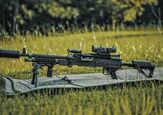
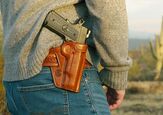
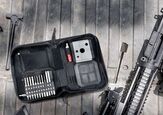






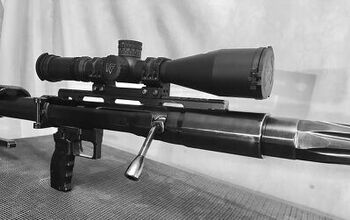
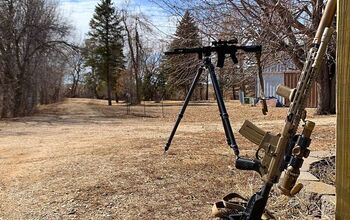


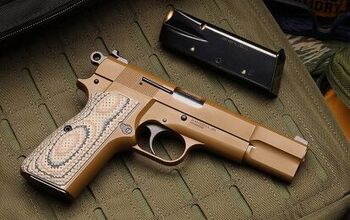






![[SHOT 2025] Staccato's New HD 2011 Pistols with Glock Mags](https://cdn-fastly.thefirearmblog.com/media/2025/01/26/17281/shot-2025-staccato-s-new-hd-2011-pistols-with-glock-mags.jpg?size=350x220)





Comments
Join the conversation
This would totally work, if not for basic physics.
Duplex rounds come and go in both military testing and civilian sales. I'm ancient, but I'm thing at least three times in the handgun and once in rifle market that I can remember. They all went the way of the Glaser Safety Slug......obscurity.